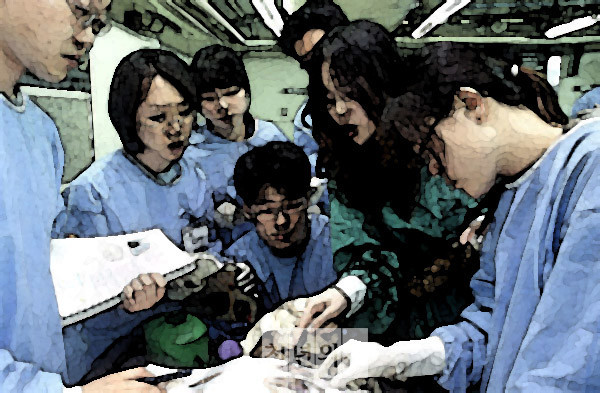The Ministry of Health and Welfare has announced its intention to revise the anatomy education curriculum in medical schools through the new 'Anatomy Education Support Center Project,' set to launch this year.
An official from the ministry’s Bioethics Policy Division recently met with medical and pharmaceutical journalists to explain the project in detail.

"The purpose of this open call is to enhance medical students' anatomy training. The plan is to select two support centers, provide them with subsidies, and have them serve as central hubs for anatomy education,” the official said.
Each school has an overall process of using donated cadavers for education and respectfully burying them. Through this project, the government hopes to create guidelines for that process, the official added.
In particular, the project will also create a system to coordinate cadaver donations.
"Cadaver donation policies vary by institution, but transferring bodies between institutions is currently not permitted," he said. “In the amendment to the relevant law proposed by Rep. Han Zee-a of the People Power Party (PPP), it is possible to provide the body to another institution, but it is still under discussion.”
One of the project’s main goals is to coordinate donations from institutions with a surplus of cadavers to those facing shortages, he added.
In response to criticism in the medical community, which pointed out that education will be difficult due to a shortage of cadavers after the medical school capacity is increased, the official said, "We understand that there is no shortage of donated bodies. Even if we increase the number of medical schools, anatomy education usually starts in the third year of the program, so we don't expect any immediate shortage," he said.
The Ministry of Health and Welfare has been criticized for not keeping track of the status of cadaver donations and anatomy education. However, a survey on the status of cadavers is underway with the Korea Disease Control and Prevention Agency (KDCA), and an amendment to the law proposed by Rep. Han includes an annual survey on the overall status of cadavers and anatomy practice, the official explained.
As for expanding the number of people who can teach anatomy, which was raised late last year, the official said there is no decision yet.
“The qualifications to teach anatomy are set by law, and there is no change in the subject of education. Rep. Jang Jong-tae of the Democratic Party of Korea (DPK) and Rep. Han of PPP have introduced a bill, and it is pending before the National Assembly Health and Welfare Committee,” he said. “We understand that there is a consensus within the medical community to expand the number of educational subjects."
On Wednesday, the ministry announced that the invitation for the “Anatomy Education Support Center Support Project” will be held until next Monday.
Eligible participants include medical schools and general hospitals authorized to provide cadavers for research under the Medical Service Act, as well as institutions authorized to provide cadavers for research under the Anatomy and Preservation Act. The primary roles of the Anatomical Education Support Center are to coordinate body donation, support anatomical education at other medical schools, and provide education on body donation.
The amendments to the Act on the Use and Preservation of Cadavers, introduced by Rep. Han, include cadaver donation coordination, which involves counseling donors to donate cadavers to other medical schools that lack donated cadavers, and support for anatomy education at other institutions, which includes providing cadaver-based training in the support center’s labs without transporting the bodies.
The amendments to the Act on the Dissection and Preservation of Human Bodies, introduced by Rep. Han in November last year, include mandatory prior screening for the use of human bodies, including observation of dissection, punishment of those who use or arrange for the use of human bodies for commercial purposes and government monitoring; and allowing the transfer of human bodies to other medical schools if the donor or bereaved family members have agreed to provide the body to the medical school to educate medical students.
The scope of who can dissect cadavers has also been expanded. Currently, only professors (including associate and assistant professors) who specialize in anatomy, pathology, and forensic medicine are allowed to teach medical students. However, the amendment allows professors of anatomy, pathology, and forensic medicine to teach cadaver dissection.
Related articles
- Government to pick 2 anatomy education support centers and provide ₩500 million
- How Korea's top surgeons learned with pig organs and passion
- Leader of medical students' group defends students' return
- New KDCA chief vows to bolster public health, localize mRNA platforms
- Ruling party defends medical student return as normalization, not preferential treatment

